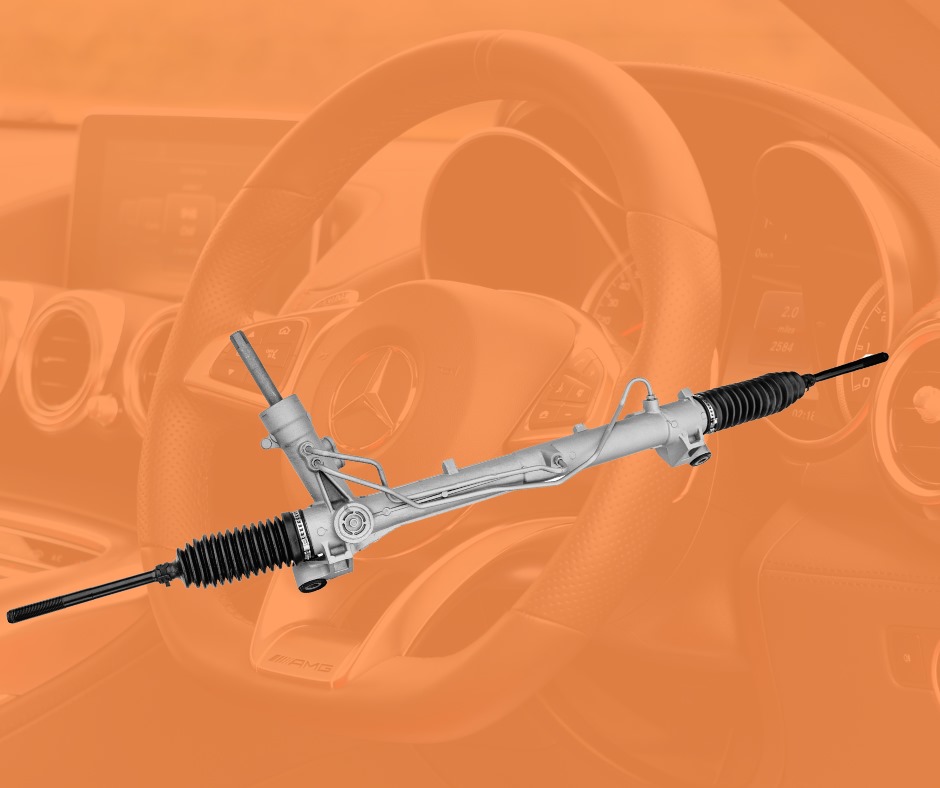Signs of a Worn Steering Rack: A Comprehensive Guide

Discover the critical signs that your vehicle's steering rack may need attention or replacement, ensuring your safety and vehicle performance.
Identifying Early Symptoms of Steering Rack Wear
The early symptoms of steering rack wear can be subtle but progressively worsen over time. Drivers may notice a slight looseness or 'play' in the steering, making the vehicle feel less responsive when turning. A clunking noise when going over bumps or turning corners can also indicate wear in the steering rack's components. If the steering feels uneven or there is difficulty in turning the wheel, especially at lower speeds, it may suggest the steering rack is beginning to fail. It's essential to recognize these early signs to address the issue before it leads to more significant problems.
Another early symptom can be the presence of power steering fluid leakage. This can often be spotted as a red or brownish puddle under the front part of the car after it has been parked. A decrease in the power steering fluid level can lead to increased effort required to turn the steering wheel, which is another telltale sign of steering rack wear.
How Steering Rack Problems Affect Vehicle Handling
Steering rack problems can have a considerable impact on vehicle handling, leading to a less safe driving experience. When the steering rack is worn or damaged, you might experience 'wandering' or an inability to hold a straight line while driving, which necessitates constant corrections from the driver. This can be particularly dangerous at high speeds or in bad weather conditions. Additionally, a failing steering rack can cause uneven tire wear, which in turn affects grip and handling. The overall stability of the vehicle is compromised, making it crucial to have steering issues diagnosed and repaired promptly.
Poor handling can also manifest as vibrations or shimmying through the steering wheel, which can indicate that the wear has extended to the steering rack's mounts or bushings. In more severe cases, a complete loss of steering could occur, posing a grave risk to the driver and others on the road.
The Impact of Neglecting Steering Rack Maintenance
Neglecting steering rack maintenance can lead to a host of problems and safety concerns. Over time, the lack of maintenance can cause the steering rack and its components to deteriorate prematurely, leading to more significant repairs or even a complete replacement. The cost of ignoring regular checks and fluid changes can manifest in poor vehicle handling, increased tire wear, and potentially hazardous driving conditions. It's important to adhere to the vehicle manufacturer's recommended service intervals to ensure the longevity and proper functioning of the steering system.
In addition to increased repair costs, neglecting steering rack maintenance could also lead to a decrease in the vehicle's resale value. Regular maintenance records are often a critical factor in the resale process, demonstrating to potential buyers that the vehicle has been well cared for.
Diagnostic Techniques for Steering Rack Issues
Diagnosing steering rack issues involves several techniques that can pinpoint the exact cause of the problem. Mechanics often begin with a physical inspection of the steering rack and its connections for any signs of wear or damage. They may also check for leaks and the condition of the power steering fluid, which can indicate the health of the system. Listening for unusual noises while the vehicle is in motion can help identify specific problems within the steering rack assembly.
In addition to physical inspections, modern diagnostic tools can assist in identifying steering rack issues. These tools can read the error codes from the vehicle's onboard computer system, which can indicate problems with the steering sensor or other related components. Mechanics can also use hydraulic pressure gauges to test the power steering pump's performance, which can affect the steering rack's functionality.
Recommended Solutions and Repair Options for a Worn Steering Rack
When faced with a worn steering rack, it's essential to consider all repair options. In some cases, parts of the steering rack, such as the bushings or seals, can be replaced without needing a full rack replacement. However, if the damage is extensive, replacing the entire steering rack may be the most cost-effective and safest option. It's important to use high-quality replacement parts and ensure that any repair work is performed by a qualified mechanic.
After any steering rack repair or replacement, a wheel alignment is typically necessary to ensure proper vehicle handling and tire wear. Regular maintenance, such as fluid changes and inspections, will help extend the life of the new steering rack and prevent future issues. Vehicle owners should also heed any manufacturer recalls related to the steering system, as these can address known issues at no cost to the owner.

 Loading..
Loading..